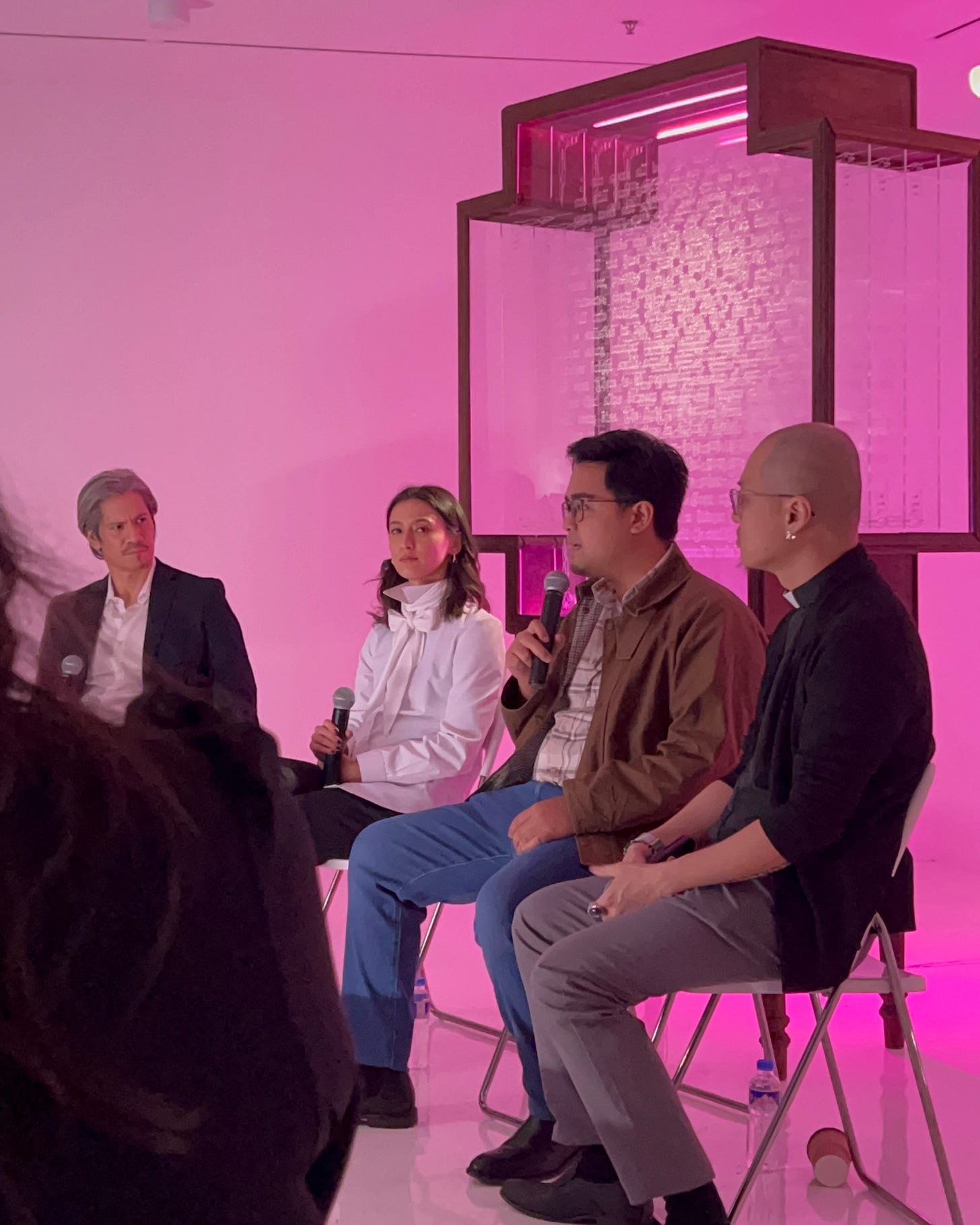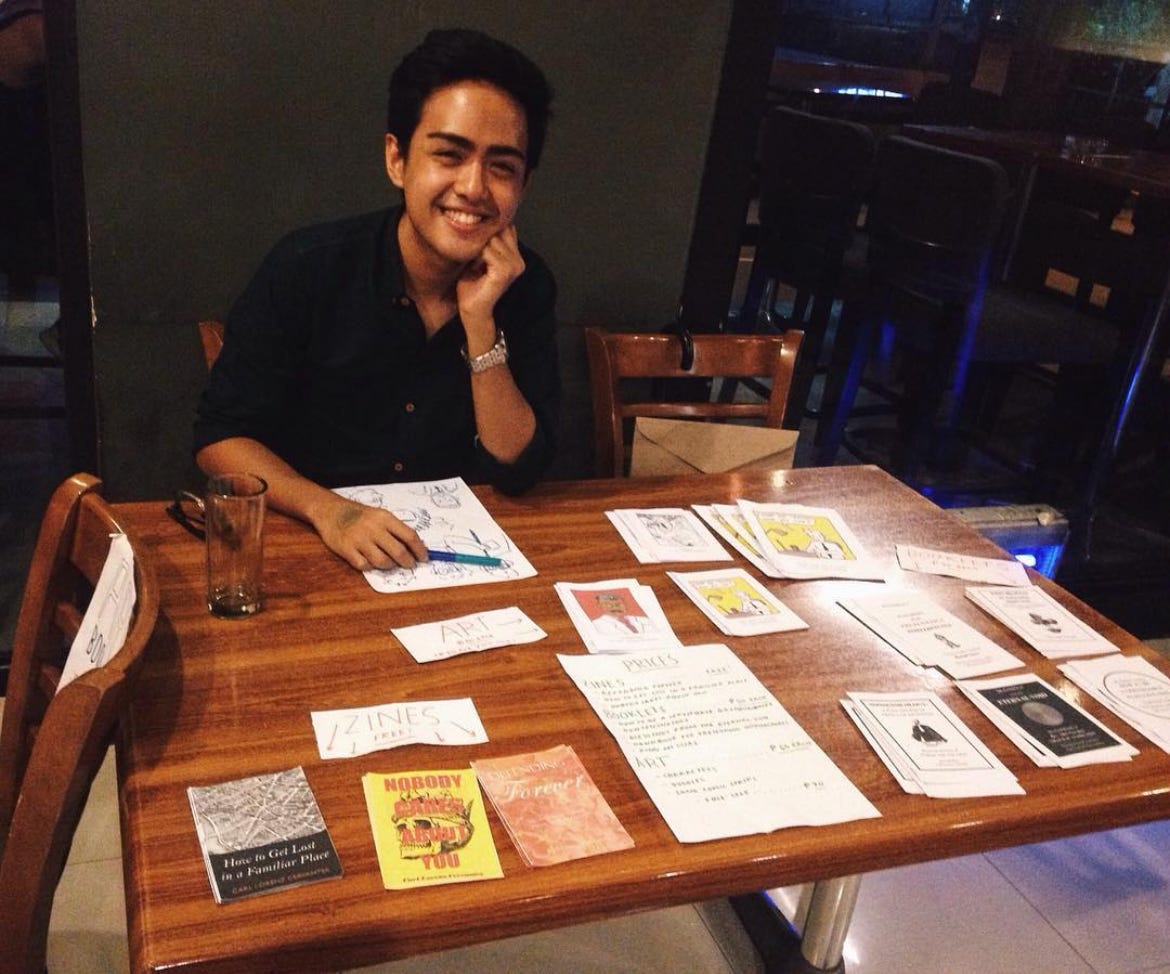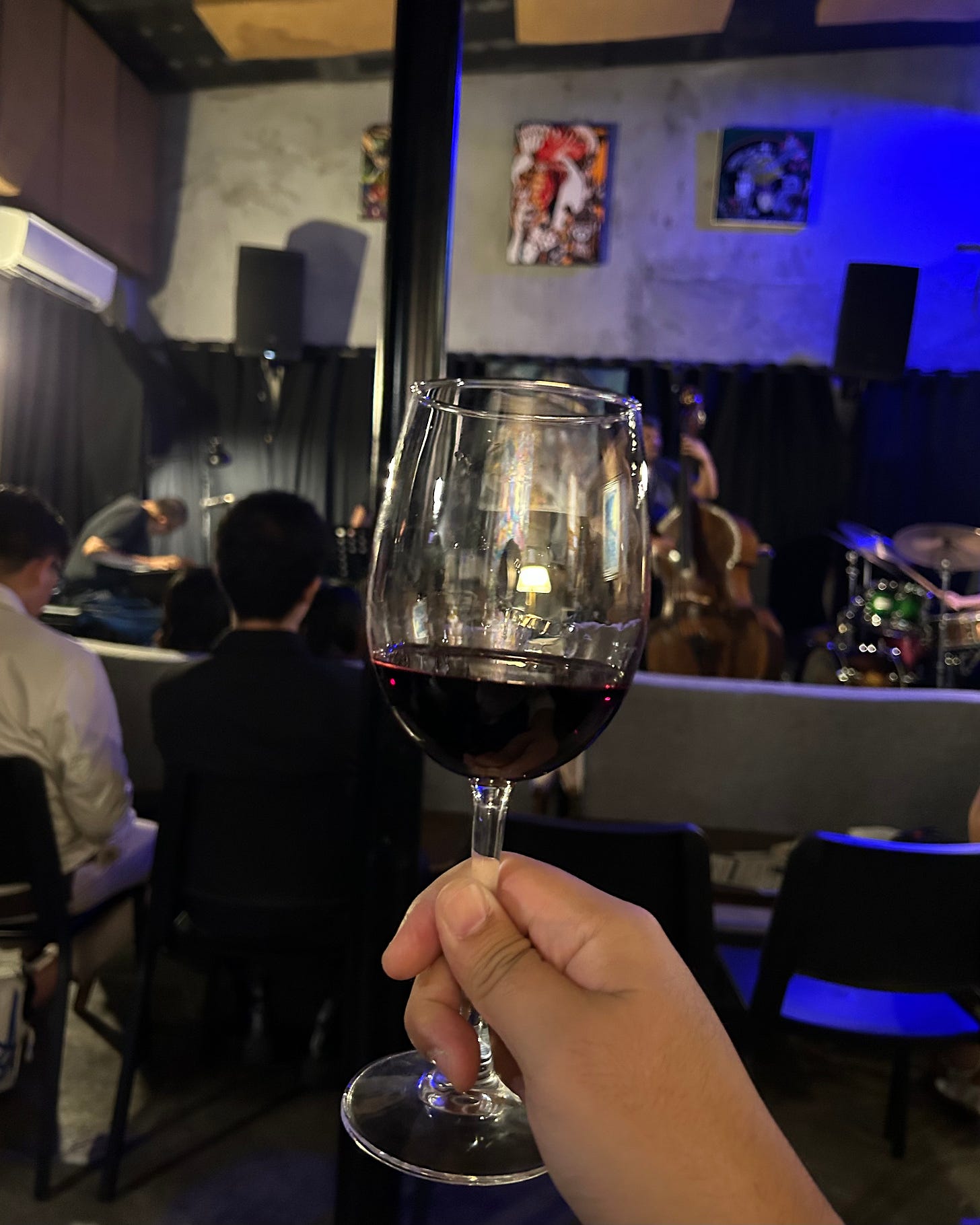Religion, Renewal, and Radical Art
Insights on how the process and experience of art can be a spiritual experience
I don’t know whether I consider myself an “artist” in the professional sense of the word. I am an enthusiast, an amateur (from the Latin amare, meaning “to love”). I draw and make crafts such as zines and air-dry sculptures. Back in 2016-2018, I was quite active in the local zine scene. One can also say that I “do” design, since I’m the one behind my own online posts on social media. I don’t have any formal training whatsoever; all of this is just vibes. (Or, perhaps, to put it more poetically, “following the daimon.”)
Recently, I’ve been working on some new zines. Aside from being the writer/researcher, I also design the covers myself and I do my own layout of its interior. My partner, Toni, assisted in their production by coordinating with the printers.

These zines were made available on 22 March 2025, during the exhibit of German-Filipino artist Silke Lapina. She renewed her baptismal vows with Pastor Joseph from the Open Table MCC, a queer-affirming church, as a choir sang a rendition of Jessa Zaragoza’s “Bakit Pa.” It was a fascinating and spiritually moving ceremony.

Earlier this month, Dr. Rina Angela Corpus, an art professor from the University of the Philippines, asked me to share my insights on the intersection of Filipino psychology and the arts in their class on “Critical Perspectives on Art.” Here is the recording1:
In this sharing, I made the point that the creative process is, more often than not, an altered state of consciousness. It’s when the sun of the “daylight” (rational) mind sets, and we can see the stars of the “night time” (irrational) mind.2 In cultures where the waking consciousness (capable of reason and logic) is prioritized, anything out of the ordinary is set aside as either fantasy or psychosis. But in cultures that have psychological structures for these experiences, the same psychotic episodes might be interpreted as shamanic trance or spirit possession.3 It is quite telling that the possession films of Western media focus on evil spirits—locally, there are cases of possession that involve historical figures such as Jose Rizal or religious figures such as the Sto. Niño. Possession is so common here that they will be building Asia’s first exorcism center in Metro Manila.
Caring for the Inner Garden
Last, last weekend, Toni, myself, and two more friends went to a massive book fair that featured local books. I was able to purchase a coffee table book on Philippine art, published by the Cultural Center of the Philippines, titled Tuklas Sining. It was on sale, for ₱800 only! I also found a copy of the literary journal where I was published a few years ago, during the pandemic lockdowns.

After filling our tote bags with new books, we all went to have wine at a live jazz bar in Quezon City.
Recent Readings
I finished reading two books connected to my work: Virgilio Almario, “Purism and ‘Purism’ in the Philippines” and Fe B. Mangahas & Jenny R. Llanguno (Editors), “Centennial Crossing: Readings on Babaylan Feminism in the Philippines.”
Almario’s monograph was a dry retelling of the drama that occurred within intellectual circles, from the 1970s onward, when they were trying to figure out what the national language of the Philippines should be. Issues were brought up, such as whether it should be “Filipino” or “Pilipino” (since we don’t have an “F” in our alphabet), or whether being Tagalog-based implies an imperial attitude, or whether we should in fact be bilingually English and Filipino. One had argued, and I find myself somewhat agreeing here, that it we should be bilingual, but with (1) a national language and (2) the mother tongue. They argued further that English should be taught in higher education, not integrated in early education, because this can become a way where Western ideologies re-enter. Another argument that I found compelling was this: when we write a dictionary based on the national language, we should include words from various ethnolinguistic groups for concepts and ideas that don’t have Tagalog equivalents.
The funny thing is that Almario also points out the fact that while the intellectuals were arguing this in the 70s, the Filipinos on the street were already using a shared language on their protest placards and radio broadcasts across the archipelago in response to a tumultuous and historical era. Filipino language is whatever Filipinos understand.
“Centennial Crossings” was a fascinating collection of reflections from a local conference on feminism. I found it to be a refreshing inclusion in the psycho-historical discourse dominated by men, but I also felt that it was using the same dynamic of power… only feminized. In other words, for a discourse on inclusivity and equality, it somewhat subtly affirmed certain social hierarchies. Grace Nono, one of the original contributors, had something to say about the babaylan archetype in her later book, “Babaylan Sing Back.” Those who tend to use it, she said, are Westernized, urbanized, and affluent. Are actual, living, contemporary Indigenous worldviews included in these discourses? In any case, it was a deeply spiritual reading.
Other Announcements
Here is a schedule for my lectures this year, exclusively for Patreon subscribers:
You may join by following this link.
I have requested for permission from both Dr. Corpus and their students to record the session and share it publicly. They have given their consent for me to do so.
This is a metaphor borrowed from Fr. Jaime Bulatao, in a book he wrote on hypnosis.
Please note that I am referring to what Grof & Grof called “spiritual emergencies,” and not disorders caused by organic diseases.








